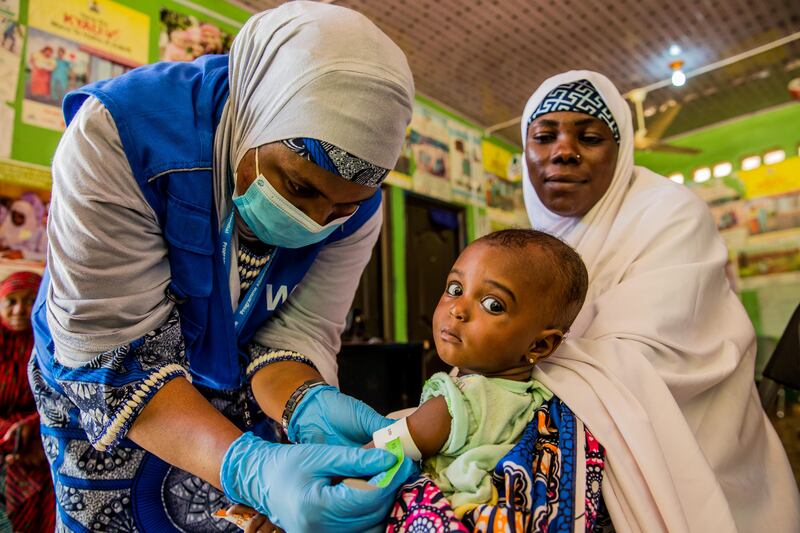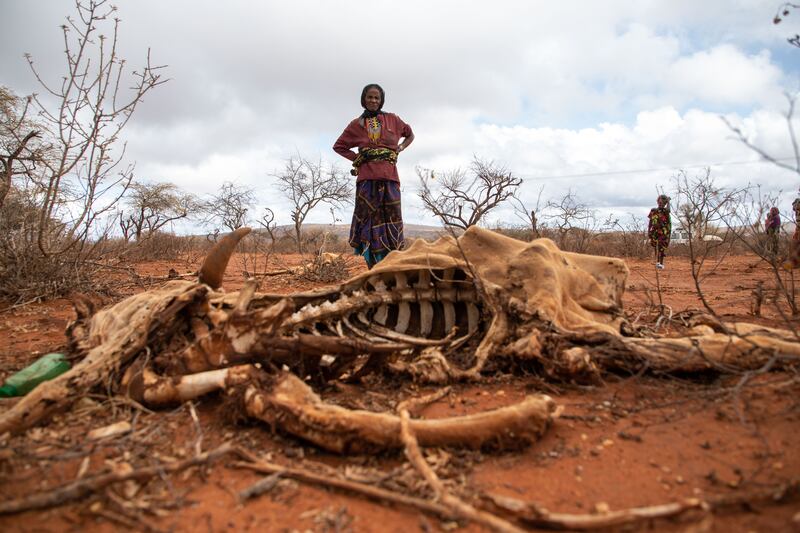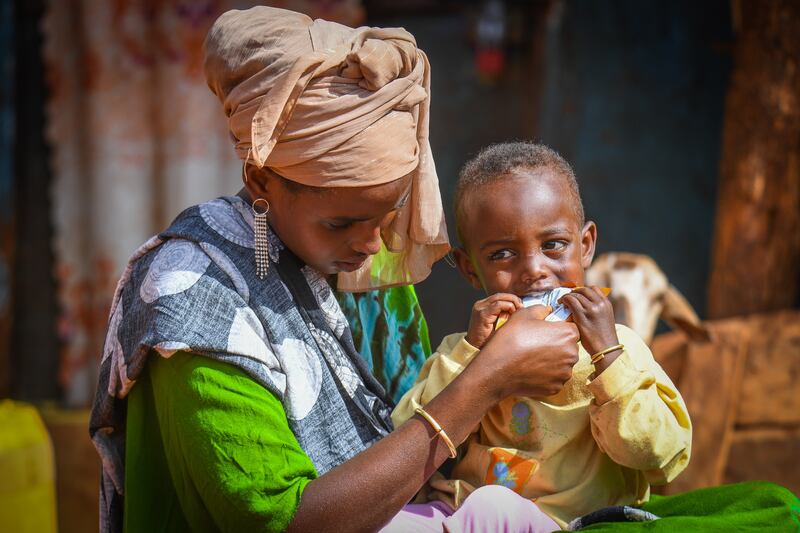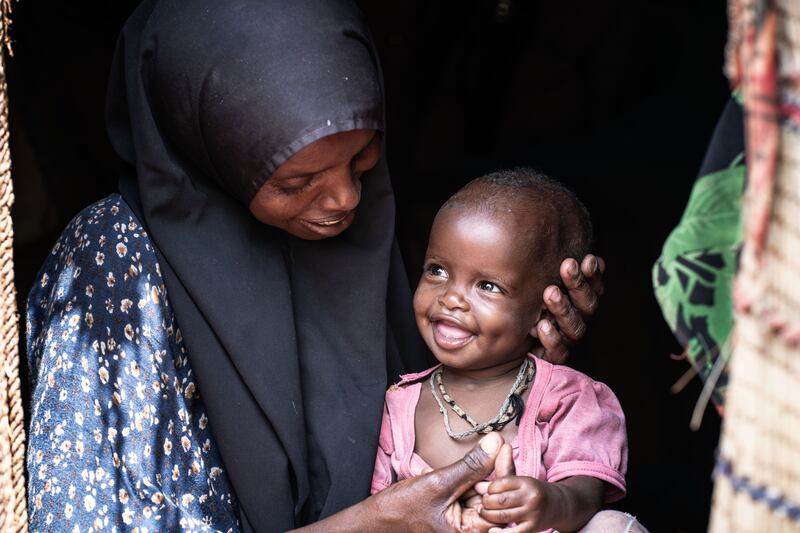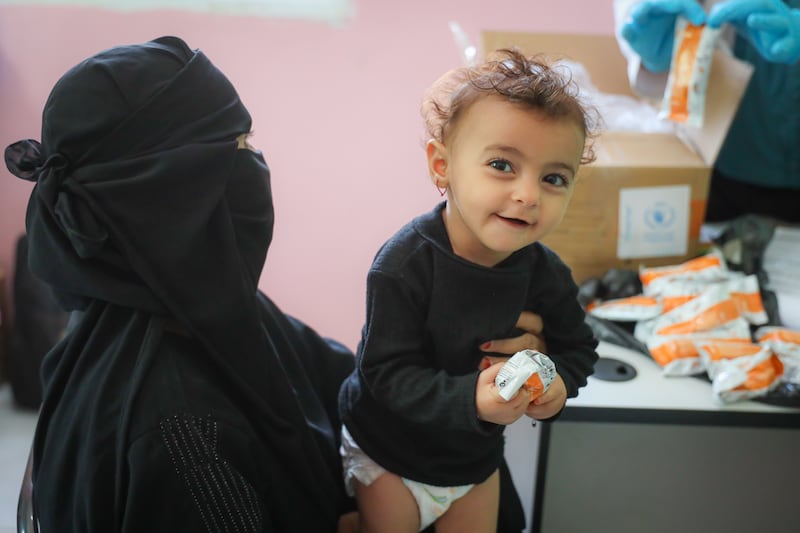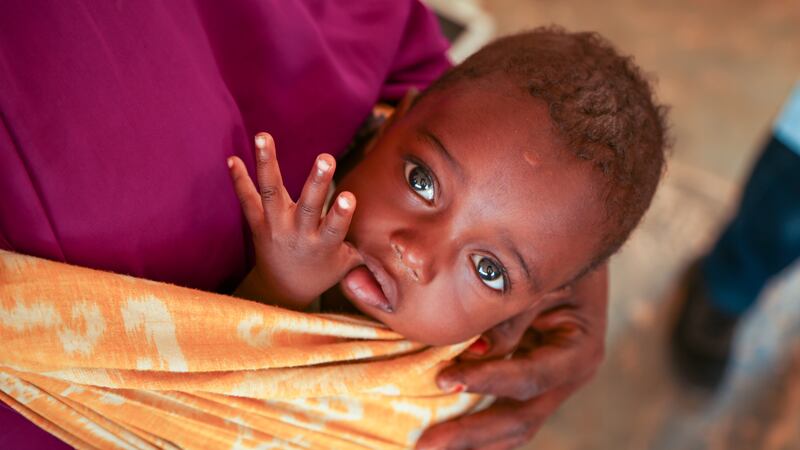Child malnutrition levels around the world are reaching a crisis point, the World Food Programme says.
Abigail Perry, director of nutrition at the agency, revealed how the problem has been compounded by the coronavirus pandemic and the cost-of-living crisis.
More than 900,000 people are currently living in famine-like conditions, with countries in the Middle East at the centre of the crisis.
She said that the worst could be yet to come unless nations ensure help is provided to those in need.
“Malnutrition levels among women and children were already concerning but the pandemic has compounded that,” Ms Perry told The National.
“The pandemic was an extremely challenging situation and it has led to continued disruption of essential services in developing countries and it also affected purchasing power.
“The global crisis created by the situation [war] in Ukraine has caused an unprecedented problem, too, as it came straight off the back of the pandemic.”
She highlighted the funding crisis that organisations such as the WFP are dealing with in the face of such challenges.
In both 2021 and 2022, the WFP required almost $1.6 billion for its nutrition interventions. This figure has risen to $2 billion in 2023, showing the impact of the food crisis.
“To reduce malnutrition requires sustained investment but it can often fall by the wayside when countries put their priorities elsewhere,” Ms Perry said.
“The cost-of-living crisis has become an increasing concern as governments are citing it when talking about the challenge of committing to humanitarian funding.”

Up to 828 million people do not know where their next meal is coming from, according to the 2022 State of Food Insecurity report.
And a record 349 million people are facing acute food insecurity in the 79 countries the WFP operates in — up from 287 million in 2021.
Even more startling was that this figure was 200 million lower than before the pandemic, according to the WFP.
Ms Perry said that the problem could get a lot worse before it improves.
“I don’t think we have seen the peak of this crisis at all yet,” she said.
“So many countries are feeling a knock-on effect with the Ukraine situation and the impact that climate change has had.
“Agricultural production cycles and food prices have been disrupted.
“The outlook for 2023 is bleak, as climate shocks and conflict risk turning the food price crisis into a food availability crisis.”
Countries in the Middle East are among the most vulnerable, she said.
Of the 900,000 people living in famine-like conditions — which is categorised as catastrophe level — more than 200,000 are in Somalia.
The remainder are in Afghanistan, Ethiopia, Haiti, South Sudan and Yemen.
The figure of 900,000 is 10 times higher than it was five years ago, she said.
“Countries like Afghanistan and Somalia have very fragile systems that need sustainable funding from governments to reverse these trends,” said Ms Perry.
“However, when you’ve only got short-term funding, it means you are trapped in a cycle and it’s harder to create systems to build community resilience.”
A major part of the challenge is getting the right kind of food to those in need, she said.
“It is not simply about getting food in their bellies each day. They need access to healthy and nutritious diets to give them the best possible path in life.
“It’s getting harder and harder to that in the face of global economic pressures and the impact of climate change.”
A failure to provide the right nutrition to those in need can have devastating consequences, she warned.
“High levels of malnourishment have a significant impact on mortality rates,” said Ms Perry.
“When children are malnourished, their vulnerability to common illness is increased.
“In countries like Somalia, when you have something like malnourishment on top of something like an outbreak of measles, the mortality levels can absolutely escalate.
“A case of malnutrition can also permanently affect their growth and development, which then impacts their further education and the possibility of living a healthy and productive life.”

